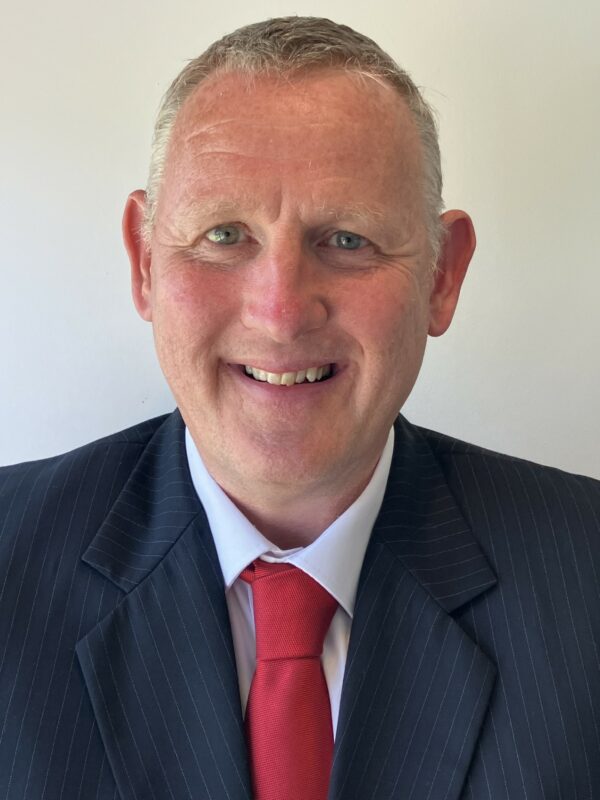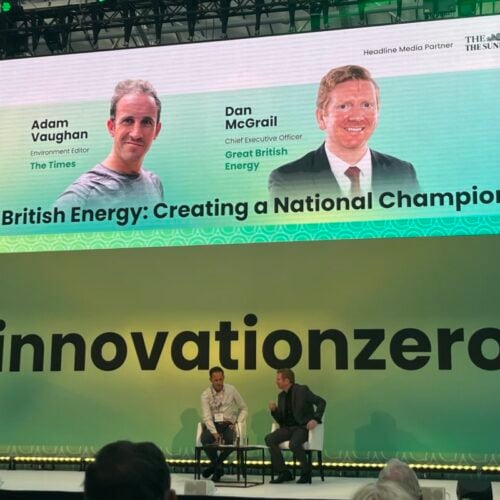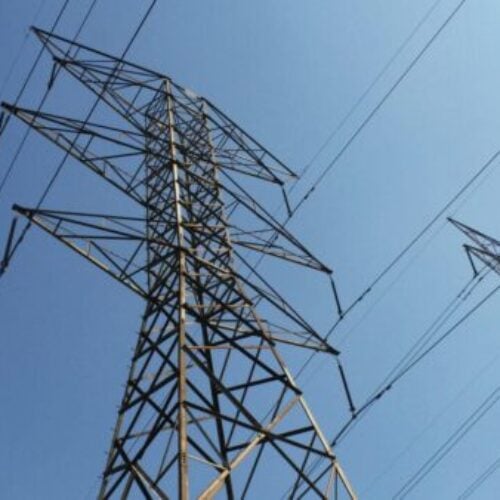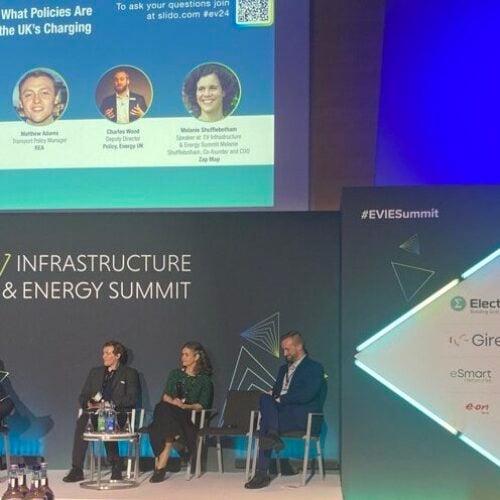Oliver Bridges, head of energy data at NTT DATA UK&I, has worked for British Gas, CGI, Smart DCC, and now NTT Data, giving him a broad overview of the use of data in the energy sector.
These roles have seen him work with data as part of the rollout of smart meters which are vital for informing energy companies how much energy is being used, and provides the basis for all kinds of new energy innovations. He talked to Current± about why the upcoming energy market reforms, in particular half hourly settlement, are a game changer for the industry.
“I live in Cornwall, we’ve got solar panels, battery, air source heat pumps, I’m very invested in the consumer side of this,” Oliver Bridges says. The consumer side of the energy industry is changing rapidly as more people install smart meters and invest in renewable technologies like solar PV, heat pumps and electric vehicles (EVs), and energy markets need to change to take account of these changing factors.
Smart meters
In 2022, the Energy Systems Catapult published a report saying that a faster rollout of smart meters will be crucial to the energy transition, but wider reform will be needed to sharpen wholesale price signals, in particular half-hourly settlements. According to the Data Communications Company (DCC), there is set to be a 500% increase in data traffic over the smart meter network over the four years from 2022.
The point of half hourly settlement, Bridges tells Current±, is “unifying the settlement process across the retail energy industry so that the balancing and settlement from the wholesalers is unified.”
At the moment, Bridges says, there are about 850,000 advanced meters for commercial operations that settle on half hourly periods, and 27-28 million smart meters for domestic and small enterprise consumers, but settlement within the latter market still operates with the consideration that there are no smart meters. Settlement for consumers will become aligned so that their 48 profile reads a day can be used for settlement.

Settlement and balancing
“Part of this is to drive the settlement process to be quicker. At the moment, it takes 14 months to be properly settled, although there’s better granularity that sharpens through various runs through the settlement process. They’re driving it now so it’ll take four months to settle any additional balancing that’s needed in the market,” Bridges says.
Faster settlement will help to balance “between what the suppliers have said they will use and what they will use, and what the generators have said they’ll generate and what they do generate,” according to Bridges. The problem of settlement means that National Grid ESO has to bring in balancing mechanisms which can be very expensive to ensure there is the right amount of electricity on the grid.
“And the balancing and settlement code is the code that sort of enables that to happen,” Bridges says. “There’s multiple parties involved, but currently, retail consumers or small businesses would have their their usage estimated, profiled essentially, according to where they live, what sort of tariff they’re on, and some similar things like that, whereas now, [half hourly settlement] will enable that granularity to take place for every consumer.”
When market half hourly settlement goes live in 2026, this settlement and balancing process will be much more accurate and quicker. Although this is the main reason for rolling out half hourly settlement, Bridges says: “it’s going to drive innovation, because at the present settlement arrangements, a consumer might use all their electricity between 4pm and 7pm. That’s where it’s really expensive. And there’s no differentiating between a user who changes their habits to one that doesn’t because the half hourly reads are elective, they don’t have to take place.”
Bridges says: “enabled half hourly reads on my meter through my supplier and I utilise a time-of-use tariff. But once all consumers or the majority of consumers have that half hourly reading available, then these types of Time Of Use tariffs will become much more prevalent within the industry and they will enable things like battery storage, EV charging, even smart appliances, load shifting, all of that.”
Driving innovation with data
Bridges says that innovation in the retail industry will mean that “only those suppliers who are taking advantage of Time Of Use tariffs will be competitive in the market. So we will see lots more innovation in tariffs. There are already suppliers out there who are doing that. But it’s not widespread. I believe once this goes live, we’ll start seeing it widespread across the market.”
Half hourly settlement “will allow suppliers to understand usage profiles, and the generation of electricity: it’s much more expensive, between 4pm and 7pm. And therefore that creates constraint on the grid. And if suppliers can encourage their consumers to move, load shift, how they use electricity, they will be able to purchase it at a lower price and sell it at a lower price. So for instance, with my battery, I will set it to download at 2am in the morning, where I know I’m getting 5p/kWh, rather than paying 35p per kilowatt hour between 4-7pm. And then that battery’s called into use, and that is obviously less constrained on the grid. And also you can take advantage of renewables that would have to be balanced out of the system anyway, if no one’s consuming that electricity overnight.”
Better data from users will also help energy and grid companies with liability, as they will be able to find and identify problems before they happen, Bridges says. And more data will be incorporated into energy trading and grid balancing, which are both already done using a lot of automation.
The smart meter rollout has been slower than anticipated for a number of different reasons, according to Bridges: “Very complex technology; it’s supplier led rollout, where some might argue it could have been a network level rollout. The technologies need to converge, so in a smart meter, you have an electric meter and a gas meter, you also have something called a communications hub. And they need to speak to each other.”
The interoperability has taken a while to get going, Bridges says, while energy suppliers have been overwhelmed with the volume of change going on in the sector, and skills shortages have caused a lack of installers.
REMA reform
Bridges believes that half hourly settlement will incentivise the uptake of domestic battery storage, of vehicle to grid (V2G) and vehicle-to-home flexibility. Incentivising more deployment of renewable generation, however, is more within the remit of REMA (Review of Electricity Market Arrangements) reform.
“Market half reassessment is an enabler to start pushing things through what they’re discussing with REMA. So nodal pricing, I think is probably looking likely to happen… certainly looking at the ESOs response, that seems to be what they’re pushing for.” If REMA does lead to nodal pricing, where instead of having a single national energy price there are multiple ‘nodes’ with different prices at different locations depending on supply and demand, it could also lead to even smaller settlement periods than half an hour, Bridges says, even as little as five minutes.
“From what I was reading, 15 minutes is very feasible, 5 minutes is possible. We’re talking a lot of technological change that would have to take place. So I couldn’t imagine that happening in the next five to 10 years. But if some of the options in REMA are pushed through, then you would expect that could be a result of it.
“If you’ve got somewhere with a lot of solar that’s going during the day, you might get batteries installed in that area, because the money men would do their algorithm and work it out and say, yeah, we can basically arbitrage on that price, we can store that electricity, and then come six o’clock when it’s dark, and there’s no solar, than our batteries will kick in. And it will drive that sort of infrastructure being built in the appropriate places. Whereas in the national picture, that doesn’t take place at the moment, and the constraint that that puts on the network is a problem and obviously one that they’re looking to solve.”
REMA would make flexibility much more possible, Bridges says: “And obviously the traders would be trading at the nodes or zonal there’s another possibility that they’re discussing. And that would be instead of one price, there would be 14 wholesale prices that they would then be trading against. So there’s a big back office change that would need to take place against this, you’d then have your forecasting and your demand management there, but what you would get is less congestion across the network.”
Recently there have been some statements from trade associations like RenewableUK and Solar Energy UK who believe that ‘radical’ changes to energy markets like nodal pricing being considered under REMA would lead to a loss in investment.
Bridges says that the important thing for investors is to know what things will be like in 10-15 years time. “The market does need to change. I agree. It needs to happen quickly. I think some clarity needs to go out there, certainly reading National Grid’s response probably signals where we’re going to go.” He also wants to see the role of the Future Systems Operator (FSO) defined and accelerated.
“There are a lot of moving pieces. I would hate to be sat in DESNZ and trying to map this out, because there are a huge amount of moving pieces going on. But that’s their job. And I think they need to get out – the faster the better.”





